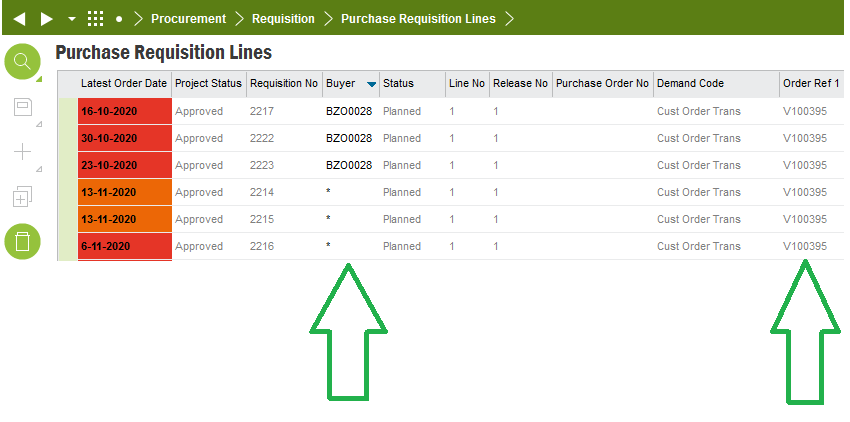Hi,
I have a question about the field Buyer (buyer code) on the Purchase Requisition Lines. When I release a Customer Order, it automatically creates Purchase Requisition Lines for the Sales Parts that needs to be purchased. Sometimes the Buyer Code on the Purchase Requisition Line is the Buyer Code connected to the User that releases the Customer Order. But sometimes the Buyer Code on the Purchase Requisition Line is het default in the system: IFS APP. This even differs on lines generated from the same Customer Order (see the screenshot below).
I cannot track down why the Buyer Code sometimes is the default and sometimes the Buyer Code connected to the user. Does someone know how this works? The ideal scenario is that IFS always fetches the Buyer Code from the User releasing the Customer Order.
Besides, it works the same when creating Purchase Requisitions from a project miscellanous demand or from a Shop Order.
See the screenshot below as illustration. We are on APPS10 Update 7.






